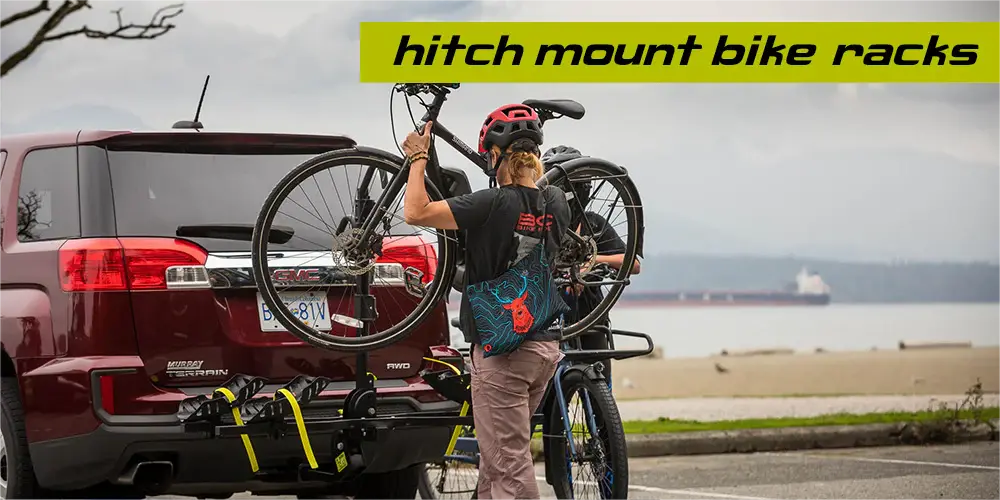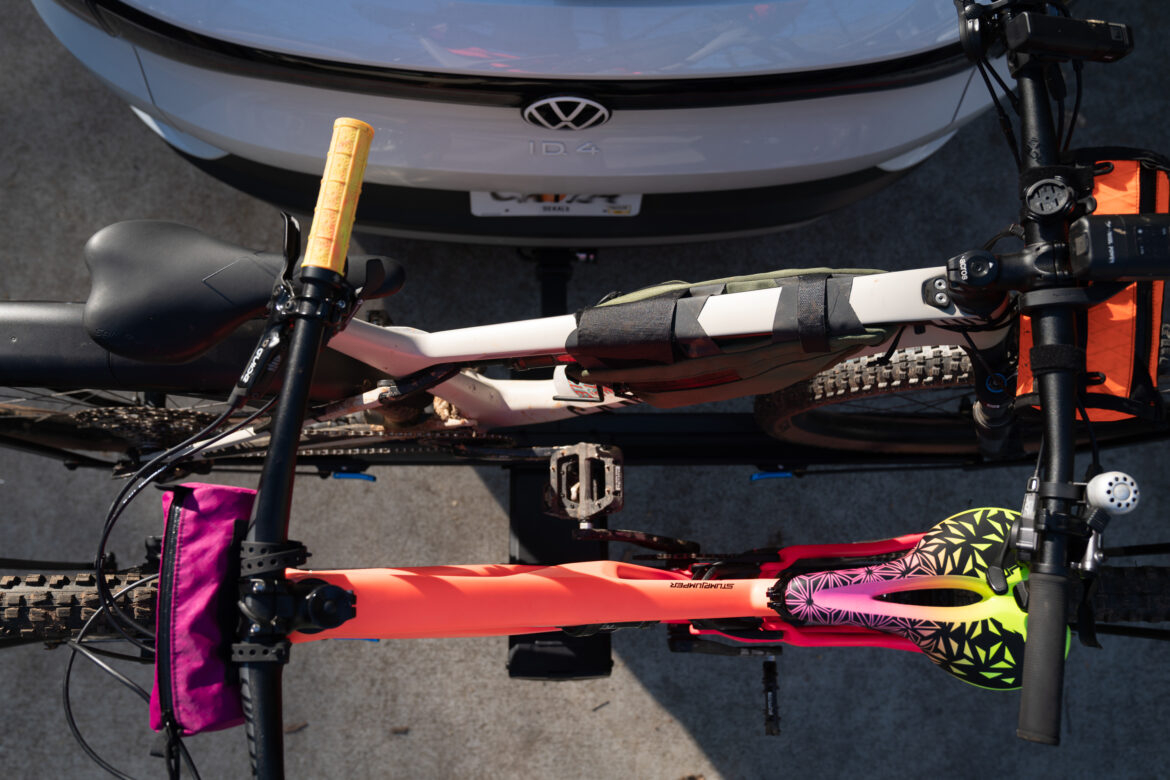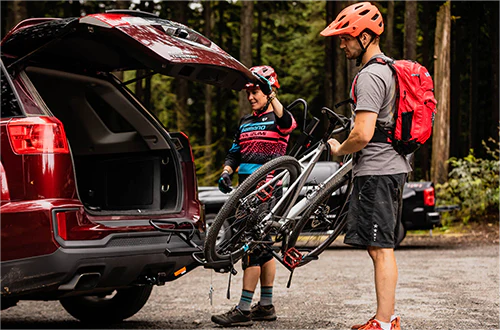Ever looked at today’s bike racks and thought—how did we get here? Same. When I first got into cycling, the racks were a mess. Big, clunky, noisy. Strapping one on felt like wrestling a gorilla. But fast forward 30 years? Whole different game.
Let me walk you through how hitch-mounted bike racks grew up—because it’s been one heck of a ride.

The 1990s: Where It All (Clumsily) Began
Back in the '90s, hitch racks weren’t winning any design awards. Heavy steel frames, no padding, zero fancy features. Just a chunk of metal you bolted to the back of your car and hoped for the best. I had one—scratched my bumper, bruised my bike, and made every highway drive sound like I had a shopping cart loose in the back.
You needed a 2-inch hitch, nothing smaller. Once you installed it, it stayed there… forever. Tilting? Folding? Forget it.
What Racks Looked Like in the ‘90s
Yep, They Were Pretty Rough
|
Feature |
1990s Hitch Racks |
|---|---|
|
Material |
Steel, heavy as heck |
|
Style |
Hanging only |
|
Bike protection |
Pretty much none |
|
Weight |
30–40 lbs easy |
|
Foldable? |
Nope |
|
Hitch fit |
2” only |
We used to throw in extra straps for "safety." Not sure it helped, but hey—it made us feel better.
The 2000s: Lighter But Still Kinda Lame
Early 2000s racks started shaving some weight. A bit more thought went into the design—sort of. Aluminum showed up. Some models folded. A few even had rubber straps instead of scratchy ropes. Progress? Maybe.
But the racks were still hanging-style. Bikes wobbled. Carbon frames cringed. I had to loop my handlebars around the upright post just to stop the swaying. Spoiler alert: It didn’t work.
What Got Better (And What Didn’t)
Lighter Doesn’t Mean Smarter
-
Racks lost a few pounds, thanks to aluminum.
-
Fold-down arms arrived (finally).
-
Straps got softer, but still fiddly.
-
Still no platform-style racks.
If you had a weird frame shape or a fat tire? Good luck. Everything needed "creative adjustments."

The 2010s: Platform Racks Take the Wheel
Now we’re talking. Platform-style racks rolled in and changed everything. Instead of hanging bikes by the frame, they grabbed the wheels. That meant no more swinging, no more scratches, and no more panic stops on the freeway.
I switched around 2014. It felt like going from a flip phone to a smartphone. Loading bikes got easier. They stayed put. And for the first time ever, I didn’t dread the trip.
What Made Platform Racks a Game-Changer
Wheels Down = Stress Down
|
Feature |
Why It Mattered |
|---|---|
|
Wheel-mount only |
Saved carbon frames |
|
Tilt function |
Easy trunk access |
|
Locks included |
Finally, some security |
|
Tool-free install |
Less swearing |
|
Works with all bikes |
Fat tires, e-bikes, kids’ bikes—yep |
Why Everyone Started Switching
-
You didn’t need straps for stability.
-
Bikes stopped banging into each other.
-
Easy enough for one person to load.
Even my neighbor, who hates “gear,” was impressed.
The 2020s: Sleek, Smart, and Seriously Easy
These days? Hitch racks are borderline luxury. Built-in lights. Integrated locks. Fold-flat designs. Anti-rattle systems that actually work. The rack I use now even has a tail light bar and a lever to lower it down. I don’t miss the old days one bit.
Today’s Racks Are Packed With Cool Stuff
What’s Standard Now (That Was Sci-Fi Before)
-
Anti-wobble tech — Keeps things quiet.
-
Fat tire trays — Bring the big bikes.
-
Universal hitch fit — 1.25” or 2”? Doesn’t matter.
-
LED lights — Plug ‘em in and go.
-
Lock and key systems — And some even link to apps!
Using One Feels Like This:
Strap the bike. Click. Done.
Drive 200 miles. No noise.
Tilt it down, grab snacks. No unloading.
Feels like cheating.
Honestly, I don’t even think about the rack anymore. And that’s a good thing.
Materials and Build Quality: From Tank to Tech
It’s wild how much the guts of these things have changed too. Not just looks—performance. Racks now weigh less, last longer, and don’t rust if you so much as sneeze on them.
The Rack Glow-Up, Inside and Out
|
Era |
Main Material |
Weight Trend |
Toughness Level |
|---|---|---|---|
|
1990s |
Powder-coated steel |
Heavy |
Eh, kinda solid |
|
2000s |
Mixed aluminum |
A bit lighter |
Decent |
|
2010s |
Welded aluminum |
Light & sturdy |
Pretty great |
|
2020s |
Alloy + coating |
Lightest yet |
Built to last |
They’re modular now, too. Want to add a third bike? Snap on an extra tray. Want to store it in your trunk? Fold it like a suitcase. Neat.

What We Wanted Back Then vs. What We Want Now
Our standards have leveled up big time. I used to just hope my bike didn’t fall off. Now? I expect the rack to lock itself, carry e-bikes, and look nice doing it.
Then (1995)
-
Just hold the bike.
-
Please don’t scratch the car.
-
I hope it fits the hitch.
Now (2025)
-
Carry all my bikes, including the heavy ones.
-
Tilt, fold, and lock.
-
Built-in lights and tool-free everything.
Cyclists today don’t want “okay.” We want “easy and awesome.” And we’re finally getting it.
What Might Happen Next?
Where do we go from here? Hard to say—but I’ve got some ideas. Electric lift arms? GPS theft alerts? Voice commands? Why not? The bar’s already pretty high, but there's always room to level up.
Wish List for the Next Decade
-
Built-in charging ports for e-bikes
-
Auto-latching arms (goodbye straps)
-
Real-time diagnostics on an app
-
Full weatherproofing for all climates
Racks might become smarter than the cars they’re on. Not even joking.
Conclusion
Looking back, it’s kinda funny how far these things have come. From clunky steel monsters to sleek tech machines. I started out tying down my bike with rope. Now I press a button and I’m good to go.
The ride's gotten smoother. The racks got smarter. And honestly? It’s been a fun 30-year glow-up to witness.



